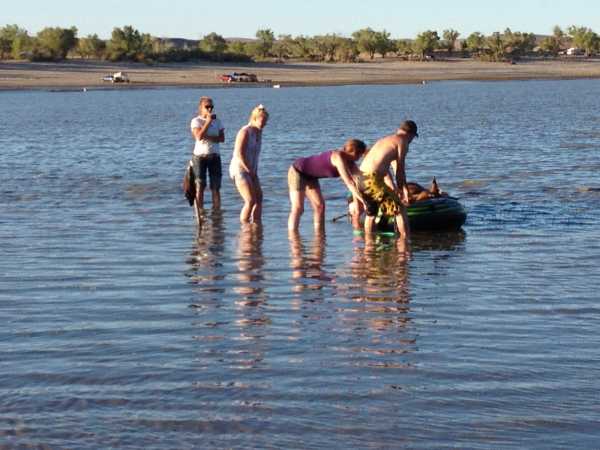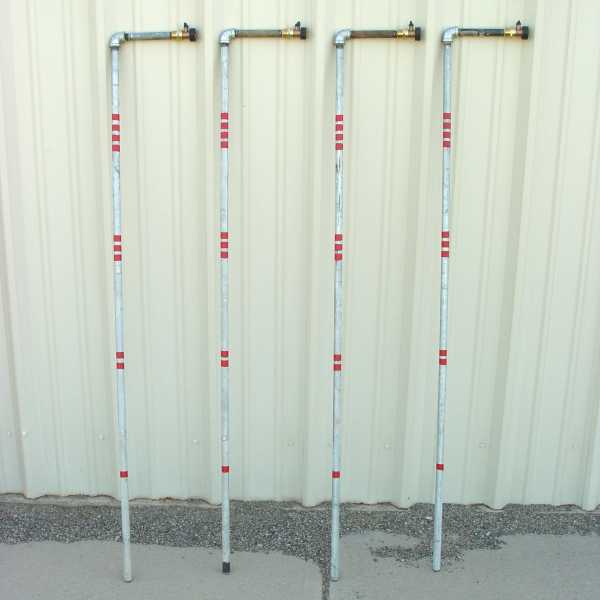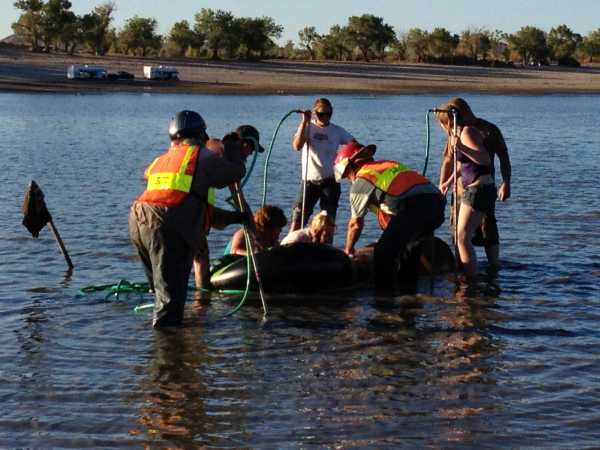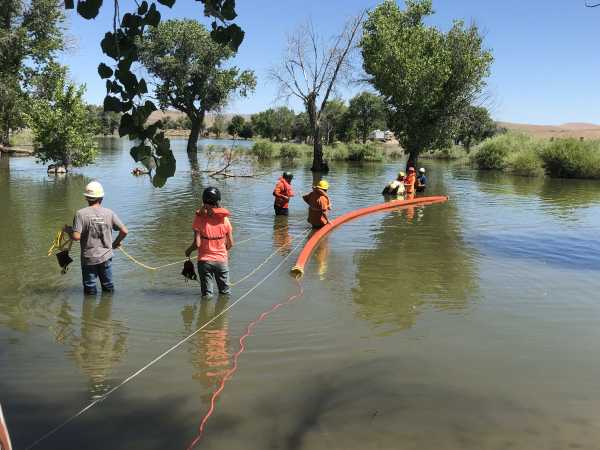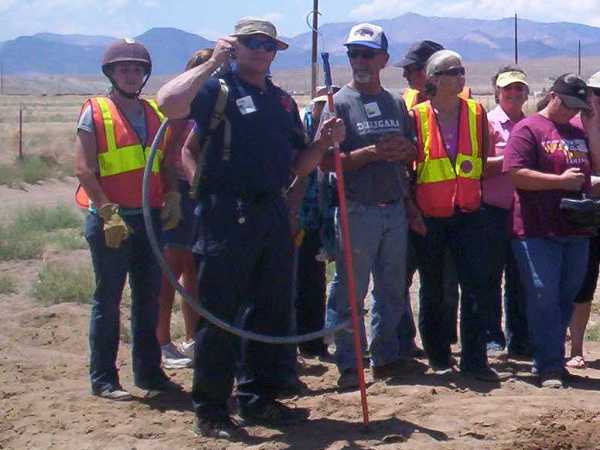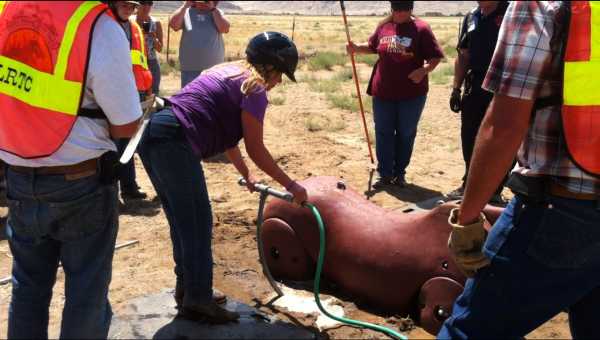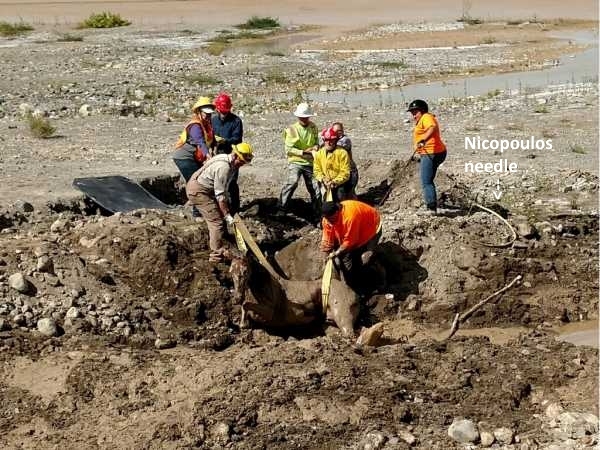
|
Least Resistance Training Concepts
|

|
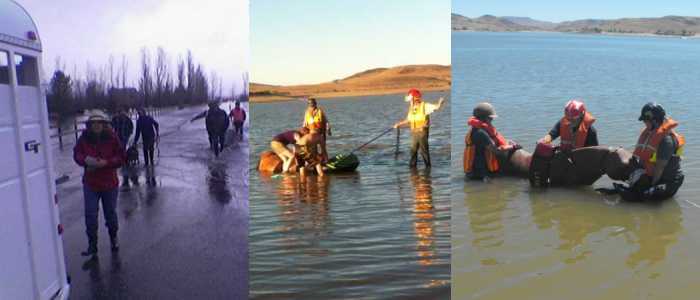
Part Four
Typical view on arrival. Civilians attempting to assist a horse bogged in relatively shallow water.
|
|
This sheet is a continuation from Part One in which the context of the information being provided and safety issues are discussed.
Note: These suggested procedures are not intended to be applicable for swift water incidents.
Jetting Wands One extreme difficulty commonly encountered when a large animal becomes bogged in mud or a soft lake bottom is that the animal's legs are similar to fence posts. Once they plunge into the soft material, suction often prevents them from self-extricating. Livestock and even people have died because they could not overcome the resistance caused by suction. Often, attempts to dig out the animal (or person) have resulted in the victim sinking even deeper, exacerbating the situation. Mechanical attempts to pull an animal or person free can result in fatal injuries. One simple and effective approach to freeing such victims involves the use of jetting wands.
Jetting wands are simple lengths of pipe through which water or air can be injected.
|
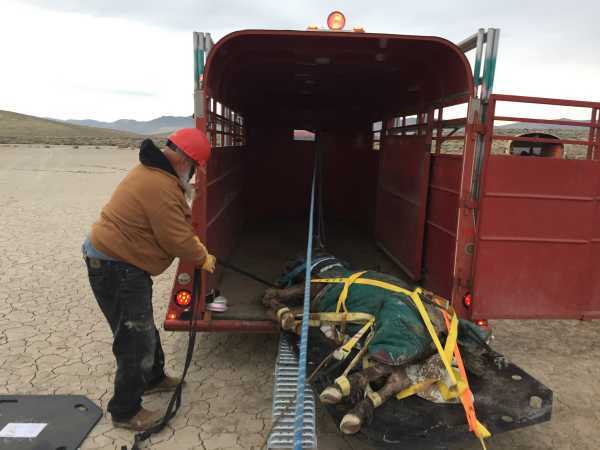
Return to Part Three
Return to Part One
Return to Information Sheets and Resource Guides
Return to Sample Incident Responses
Return to LRTC TLAR / EVAC Page

The training information presented in these information sheets and guides is offered for illustrative and volunteer refresher purposes only. It is not a substitute for actual hands-on training. |
